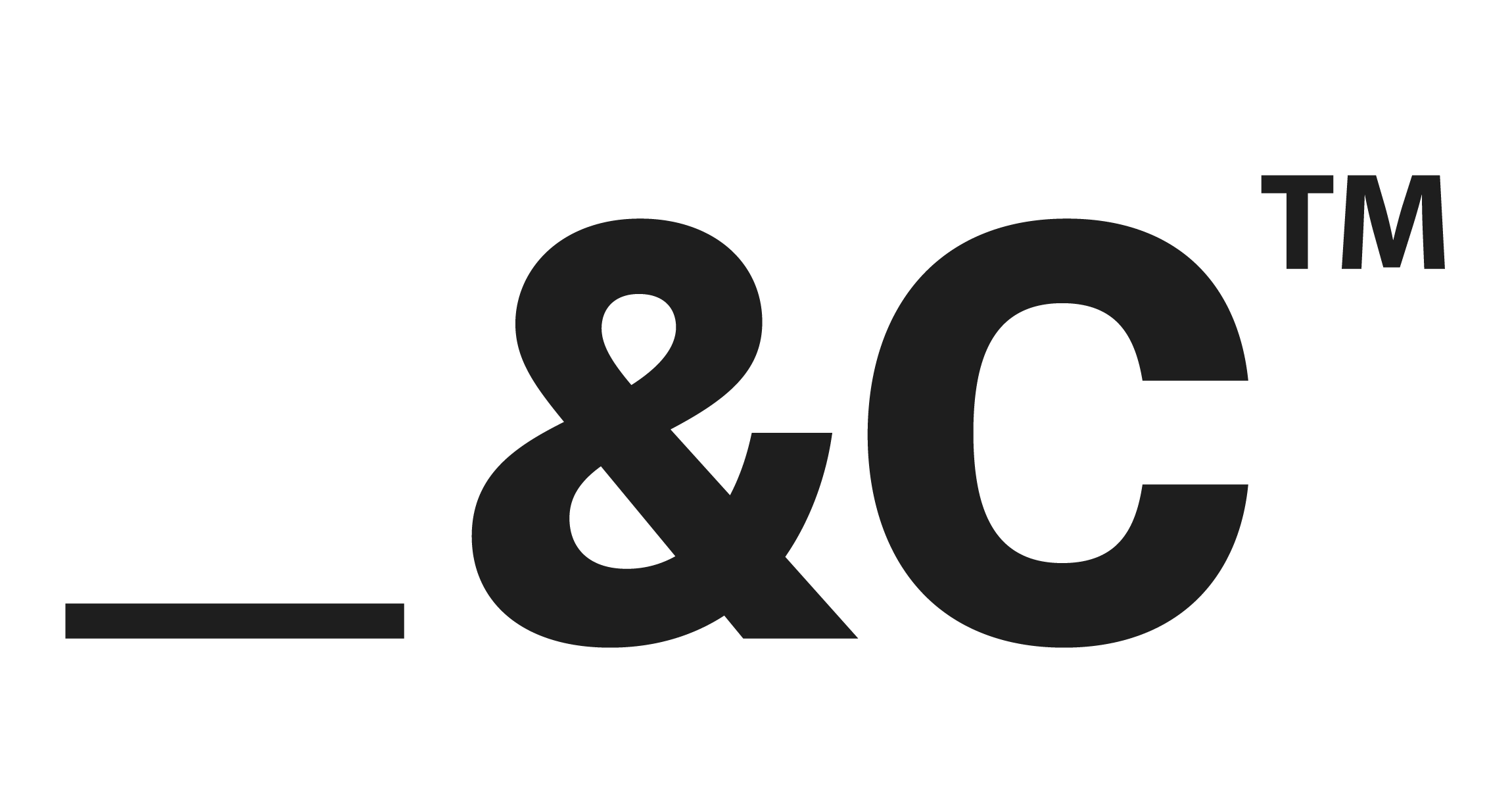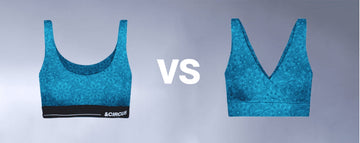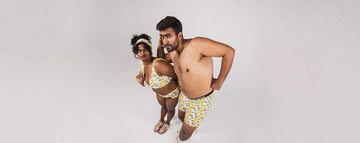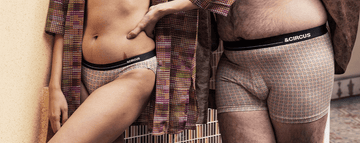Quick Listen:
In a world where identity is increasingly fluid, fashion is catching up. Walk through any major city New York, London, Tokyo and you'll see it: people of all ages and backgrounds wearing clothes that defy the old rules of “menswear” or “womenswear.” A teenager in a flowing skirt, a professional in tailored joggers, a non-binary individual in a boxy tee that feels just right. The rigid lines of gender in fashion are blurring, and brands like AndCircus are at the forefront, crafting underwear and loungewear that prioritize comfort, sustainability, and inclusivity for all. This isn't just a trend it's a cultural shift, one that's reshaping the $2.5 trillion global fashion industry.
Uncomfortable underwear shouldn't steal your confidence. At Andcircus, we craft ultra-soft, sustainable Lenzing Modal Micro® innerwear for every body, XS to 5XL. From briefs to bras, our custom packs fit you perfectly. Shop risk-free with our 100% satisfaction guarantee and embrace comfort that includes everyone. #LoveEveryBody. Shop Now!
The Rise of Gender-Inclusive Fashion
The numbers tell a compelling story. According to a report from Dataintelo, the global market for gender-inclusive clothing was valued at $2.5 billion in 2023 and is projected to soar to $10.3 billion by 2032, boasting a robust compound annual growth rate (CAGR) of 16.5%. What's driving this boom? A growing societal acceptance of diverse gender identities, particularly among non-binary and transgender individuals, is pushing fashion to evolve. Millennials and Gen Z, who are more likely to challenge traditional gender roles, are leading the charge, demanding clothing that transcends the binary norms of male and female fashion.
But it's not just about identity it's about choice. Consumers today want clothes that feel authentic, that reflect who they are without being boxed into outdated categories. Brands like AndCircus are listening, offering gender-neutral underwear and loungewear designed to fit a spectrum of bodies and identities. Their eco-friendly fabrics and minimalist designs aren't just stylish they're a statement: fashion should serve everyone.
Sustainability Meets Inclusivity
The gender-inclusive movement dovetails with another powerful force in fashion: sustainability. Consumers, especially younger ones, are drawn to brands that align with their values ethical production, eco-conscious materials, and inclusivity. AndCircus, for example, uses sustainable fabrics like organic cotton and recycled fibers to create pieces that feel good on the body and the conscience. This intersection of inclusivity and sustainability is no coincidence. As the gender-neutral clothing market valued at $2.1 billion in 2023 and expected to reach $5.6 billion by 2032 with an 11.5% CAGR continues to grow, brands that marry these principles are finding a loyal audience.
Take TomboyX, another pioneer in this space. Their gender-neutral underwear and loungewear have gained a cult following by prioritizing comfort and inclusivity while using sustainable materials. Similarly, PACT's organic cotton basics appeal to those who want ethical fashion without sacrificing style. These brands aren't just selling clothes they're building communities around shared values, proving that inclusivity and sustainability are more than buzzwords; they're a blueprint for the future.
Challenges on the Runway and Beyond
Despite the momentum, gender-inclusive fashion faces hurdles. Sizing, for one, is a persistent challenge. As noted in a Vogue Business article, while designers like Dior and Valentino are embracing gender fluidity on the runway think leopard print skirt-shorts or softer tailoring translating these concepts to retail is trickier. Gender-neutral clothing requires sizing charts that accommodate diverse body types, which can complicate production and inventory. A one-size-fits-all approach rarely works, and brands must balance inclusivity with quality and fit.
Retail itself poses another barrier. Traditional stores and online platforms often rely on legacy systems that categorize clothing as “men's” or “women's,” making it hard to merchandise gender-neutral collections effectively. AndCircus and others are navigating this by prioritizing direct-to-consumer models, where they can control how their products are presented. But for the industry at large, rethinking these systems is a work in progress.
Then there's the challenge of consumer education. While urban centers and younger demographics embrace gender-inclusive fashion, more traditional regions or older consumers may need convincing. Brands must communicate the value of inclusivity without alienating those who cling to conventional norms. It's a delicate dance, but one that's worth it: the gender-neutral clothing market, valued at $98.2 billion in 2023 and projected to hit $209.73 billion by 2031 with a 6.2% CAGR, shows that demand is far from niche.
Opportunities for Growth
For brands like AndCircus, the opportunities are vast. By embracing gender inclusivity, they're tapping into a diverse customer base non-binary individuals, allies, and anyone who values comfort over convention. This approach fosters loyalty, as consumers gravitate toward brands that reflect their identities and values. AndCircus's focus on sustainable materials, like bamboo-based fabrics or recycled polyester, also gives them a competitive edge. Eco-conscious consumers are more likely to support brands that prioritize the planet alongside people.
Innovation is another advantage. Gender-inclusive design encourages brands to rethink traditional cuts and materials, leading to fresh, functional styles. A boxy tee that fits multiple body types, a pair of lounge pants that feel like a second skin these are the products that resonate. According to Archive Market Research, the gender-inclusive clothing market could reach $500 million by 2025 with a 15% CAGR through 2033, driven by demand for comfortable, stylish apparel that transcends gender binaries.
Beyond the numbers, there's a cultural impact. Gender-inclusive fashion challenges the status quo, sparking conversations about identity and expression. When a brand like AndCircus designs a piece that works for any body, it's not just selling clothes it's promoting a world where everyone belongs.
A Future Without Labels
The future of fashion is clear: it's inclusive, sustainable, and unbound by gender. As societal norms evolve, so too will the industry. Major brands are already taking note, launching gender-neutral lines that reflect the changing times. But it's the smaller, purpose-driven brands like AndCircus that are leading the way, proving that fashion can be a force for good.
For businesses looking to thrive, the path forward is simple but profound: listen to your customers. Conduct market research, engage with marginalized communities, and design with intention. Inclusivity isn't a trend it's a commitment to reflecting the diversity of the world we live in. As the gender-inclusive clothing market surges toward $10.3 billion by 2032, brands that embrace this shift will not only survive but thrive.
In the end, gender-inclusive fashion is about more than clothes. It's about creating a world where everyone can express themselves authentically, without fear or constraint. Picture that teenager in the flowing skirt, that professional in tailored joggers, that non-binary individual in a perfectly fitted tee. They're not just wearing clothes they're wearing freedom. And brands like AndCircus are helping make that possible, one sustainable stitch at a time.
Frequently Asked Questions
What is gender-inclusive fashion and why is it growing?
Gender-inclusive fashion refers to clothing designed to transcend traditional "menswear" and "womenswear" categories, prioritizing comfort and fit for all body types and gender identities. The market is experiencing rapid growth, projected to reach $10.3 billion by 2032 with a 16.5% CAGR, driven primarily by Millennials and Gen Z who are challenging binary gender norms. This shift reflects broader societal acceptance of diverse gender identities and consumer demand for authentic self-expression through clothing.
What are the main challenges facing gender-neutral clothing brands?
Gender-neutral fashion faces three primary obstacles: sizing complexity, retail infrastructure, and consumer education. Creating sizing charts that accommodate diverse body types while maintaining quality fit is difficult, as one-size-fits-all approaches rarely work effectively. Additionally, traditional retail systems that categorize clothing as "men's" or "women's" make merchandising gender-neutral collections challenging, forcing many brands toward direct-to-consumer models to maintain control over product presentation.
How does sustainability connect to gender-inclusive fashion?
Sustainability and gender inclusivity have become intertwined movements in fashion, particularly appealing to younger, value-driven consumers. Brands like AndCircus use eco-friendly materials such as organic cotton, recycled fibers, and Lenzing Modal Micro® to create gender-neutral pieces that align with both environmental and social values. This combination builds loyal customer communities and provides a competitive advantage, as consumers increasingly support brands that prioritize both people and the planet alongside inclusive design principles.
Disclaimer: The above helpful resources content contains personal opinions and experiences. The information provided is for general knowledge and does not constitute professional advice.
You may also be interested in: How Inclusivity Is Reshaping the Plus-Size Underwear Market
Uncomfortable underwear shouldn't steal your confidence. At Andcircus, we craft ultra-soft, sustainable Lenzing Micro Modal innerwear for every body, XS to 5XL. From briefs to bras, our custom packs fit you perfectly. Shop risk-free with our 100% satisfaction guarantee and embrace comfort that includes everyone. #LoveEveryBody. Shop Now!







































